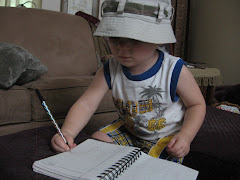1. BIBLIOGRAPHY
Alvarez, Julia. THE WOMAN I KEPT TO MYSELF. Chapel Hill, NC: Algonquin Books, 2004. ISBN 1565124065.
2. PLOT SUMMARY
This volume of poetry is a collection of previously published and new poetry from Alvarez, well known for her novels How the Garcia Girls Lost Their Accents and In the Time of the Butterflies. Autobiographical in nature, the 75 poems present a picture of Alvarez’s thoughts and feelings based on experiences from both her childhood in the Dominican Republica and her youth and adulthood in the United States. From being called a spic in elementary school, to being an anorexic teenager, to getting divorced and finding love again, to pondering death, Alvarez’s voice speaks strongly through this collection.
3. CRITICAL ANALYSIS
Alvarez presents 75 poems – every one of which is 30 lines long broken into three stanzas of 10 lines each, causing me to wonder if these poems were some sort of exercise for the author in writing in this particular style. Each poem also feels less like poetry and more like very short stories. However, her use of language had me continually thinking, “that’s a very nice turn-of-phrase.” For example when describing how a branch of her family tree had found it’s way onto foreign soil when a great-aunt married a German, the result was “blond cousins / with year-round suntans.” A recurring metaphor through the collection is that of different trees representing various characteristics - the show-off maple, the mighty oak synonymous with strength, the vague elm best viewed from a distance, the arborvitae trees of life, the locust tree full of activity, the tall saman allowing views into neighbors’ yards, and the sad weeping-willow; all illuminate people and feelings throughout the poems.
Allusions to biblical references such as Isaac’s near-sacrifice, and Jesus multiplying the loaves to feed the multitudes, along with uncommon Spanish vocabulary such as campesinos, cortesia, and allegria have no explanations or translations at all. The volume does not include footnotes, a glossary, or even context clues for many of the references and words. Sheila Janega, in a review for the School Library Journal, says, “Teens approaching adulthood will appreciate the poet who turned to "paper solitude" and through many drafts discovered ‘the woman I kept to myself.’” However, I find that the content of most of the poems will probably appeal to the adult reader rather than the teen reader. Written from a strong woman’s point of view, this volume seems best suited for the adult woman from either culture – Hispanic or American.
4. REVIEW EXCERPTS
*School Library Journal: “This tightly structured collection of 75 poems is divided into three sections, and each poem has three stanzas, exactly. Alvarez's voice, however, is as free and strong as the free verse she composes.”
*Library Journal: “Quotidian events, a storylike structure, and colloquial diction make Alvarez's latest book seem more like a memoir (albeit one written with attention to the sounds of language, especially alliteration) than a book of poetry. . . . Alvarez at her best writes in a style reminiscent of Billy Collins. There are deceptively simple conversational poems, like "Saman" and several others here, which resonate in a bright mesh of metaphors. Yet most of the work in this collection does not attain that level.”
*Publishers Weekly: “Author of the popular novels How the Garcia Girls Lost Their Accents and In the Time of the Butterflies, Alvarez continues to explore themes of cultural difference and personal experience in her new collection of poems. The book, which marks her fourth collection of poetry, comprises 75 poems of 30 lines each; the formal constraint is an organizing principle for these sometimes meandering autobiographical poems.”
5. CONNECTIONS
• Compare Alvarez’s poems to those of other women writers. Which do you like best and why?
• Try telling stories through poetic language as Alvarez does.
• Choose a poem and use it for inspiration for writing a fictional short story. For example, use the poem “Weeping Willow” as a basis for writing a story about why the father is crying. He seems to be in severe distress, but the poem does not answer the question “why?” Write a story about why, and how a young girl feels about seeing her father cry for the first time.
• Use photographs of family scenes from home, or pictures found in magazines and other print materials, as a jumping off place for writing narrative poems.
GUEST POST: Chris Baron on SPARK
7 months ago



No comments:
Post a Comment